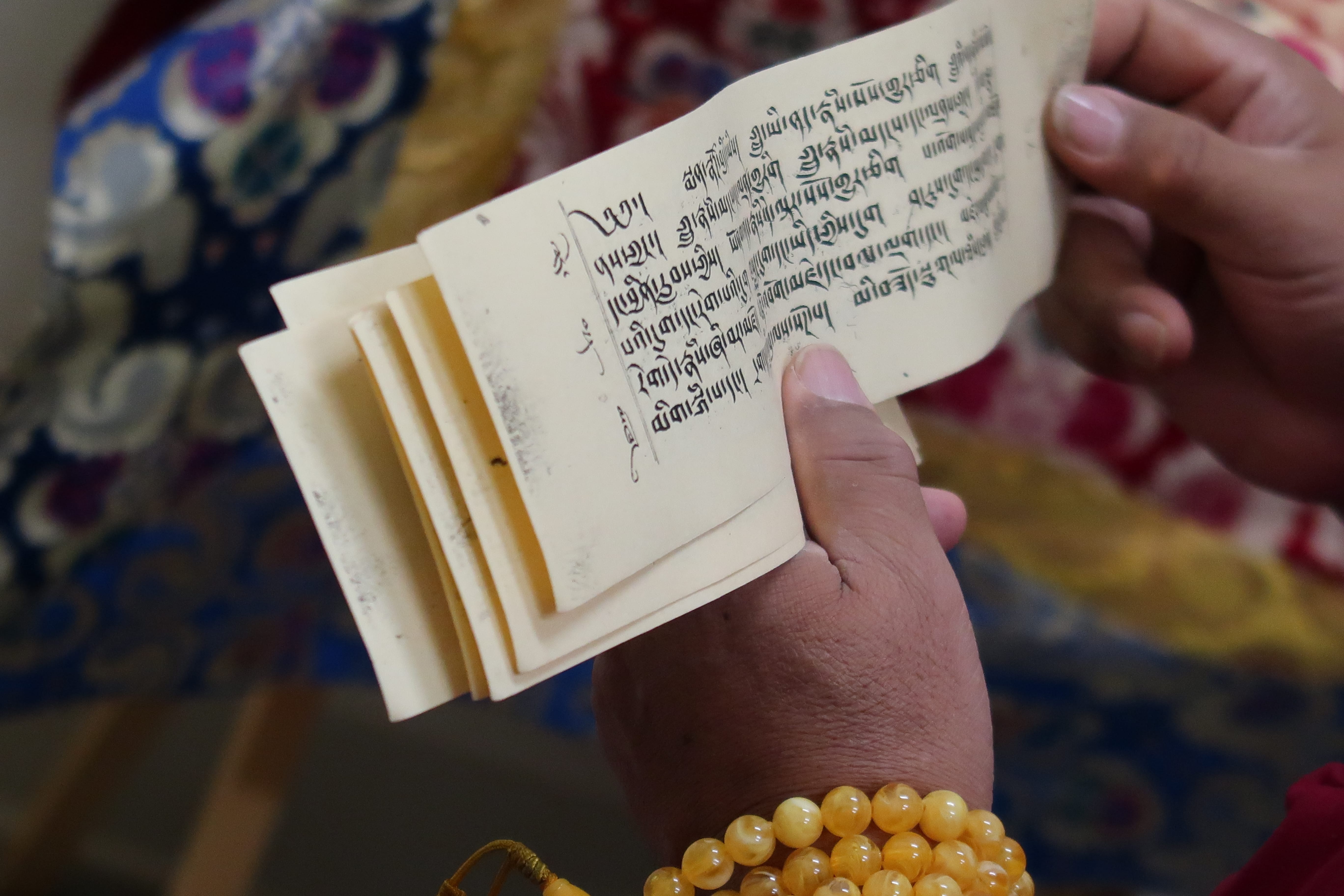
What Is Bön?
Bön is among the oldest indigenous spiritual traditions in the world. It originated in Central Asia thousands of years ago and eventually took root in what is now Tibet. According to the Bön tradition, the earliest teachings of Bön come from Tonpa Shenrap, a fully enlightened being (a Buddha), more than 17,000 years ago. The Bön teachings, referred to by many as Tibetan Bön Buddhism, share much in common with Tibetan Buddhism, yet maintain their own unique roots and traditions.
—His Holiness the 14th Dalai Lama.
Since their beginning, the Bön teachings have been transmitted from teacher to student, generation after generation. This unbroken lineage ensures that the tradition remains vital and alive century after century. Through study and direct experience, our teachers guide us along a path to enlightenment that can be gradual or, in some cases, accomplished in a single lifetime.
In Tibet and Nepal, many monasteries support Bön monks, nuns, and practitioners. Ligmincha maintains close relationships with two monasteries in particular: Triten Norbutse Monastery in Nepal and Menri Monastery in India.
Is Bön Buddhist?
Other forms of Buddhism originated with Buddha Shakyamuni of India. This difference in lineage results in different texts, practices and external forms. The truths of the teachings are the same. Both cultivate the generation of wisdom and compassion in the hearts and minds of all practitioners, their highest teachings emphasize a way of creating harmony both within oneself and in relation to the outer world and society through self-realization.
What Is Bön?
—His Holiness the 14th Dalai Lama.
Since their beginning, the Bön teachings have been transmitted from teacher to student, generation after generation. This unbroken lineage ensures that the tradition remains vital and alive century after century. Through study and direct experience, our teachers guide us along a path to enlightenment that can be gradual or, in some cases, accomplished in a single lifetime.
In Tibet and Nepal, many monasteries support Bön monks, nuns, and practitioners. Ligmincha maintains close relationships with two monasteries in particular: Triten Norbutse Monastery in Nepal and Menri Monastery in India.
Is Bön Buddhist?
Other forms of Buddhism originated with Buddha Shakyamuni of India. This difference in lineage results in different texts, practices and external forms. The truths of the teachings are the same. Both cultivate the generation of wisdom and compassion in the hearts and minds of all practitioners, their highest teachings emphasize a way of creating harmony both within oneself and in relation to the outer world and society through self-realization.
